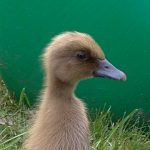Extensive plaster cracking after heat pump installation - thermal cracking? subsidence?
Hi,
Perhaps a long shot, but wondering if anyone has had issues with thermal cracking following a change of heating system. We’re in a 1930s converted bungalow with old plaster walls and ceiling. We switched to a heat pump from a combo boiler in August and had underfloor insulation installed at the same time which significantly reduced draft and damp from the foundations through the wood floors. We had some ceiling cracking prior to this, but have had widespread and quite worrying cracking in walls and ceiling this winter. We’re property surveyed as we are worried it could be land slip or subsidence, but I’m wondering if a more benign explanation is possible in terms of thermal / moisture changes related to the new heating system?
Would be really interested if anyone’s had a similar experience.
Thanks
if there was a lot of damp in the lower walls and foundations the cracking could be caused by the drying out. How large are the cracks?
I suspect also that it's the floor insulation and reduction in damp. That sort of thing happens when you mix modern insulation/damp proofing with the original in an old house. I suspect it will settle down and at worse you'll need to do a bit of filling. But make sure you use the correct sort of plaster/filler (same as the original) if you do.
@hjbhome Before you open up a can of worms re. potential subsidence - insurance claims, underpinning etc 😱.
Unless the cracks are large enough to see into the brickwork, or they are actually following the brick courses to some extent, the only way to be absolutely certain would be to hack off the plaster on the worst wall, (or perhaps an affected wall in a small room to look at the brickwork - then you only have a smallish area to re-plaster...) External signs of cracking along brick courses would be more worrying - although can also be caused by rusting cavity wall ties.
However... When you say 1930's property, I would think you quite likely still have a lot of natural lime plaster. This "breathes" - takes up & gives out moisture - adapts to humidity levels. How much it has been able to do this fully naturally, I suspect will have been reduced by the layers of modern emulsion or other paints, partially sealing the walls in modern times. They may have been breathing to some extent but taking much longer to do so with the modern paint coatings.
Your serious thermal improvements & draught reduction are no doubt keeping more heat in the property than you previously managed. It may be that the sudden change in air temp / dryness - without the previous possibly slightly damp draughts, may have caused the plaster to dry out very rapidly. Hence the cracking. There are a number of lime & eco specialist companies that supply fillers that might do the job. A bit more expensive. On the other hand if there are innumerable coats of modern paints then a modern flexible filler might be ok, I would leave it for some time until the cracking activity has stopped. If you still have lath & plaster ceilings then I should think the same would apply - they do become more vulnerable with age anyway - plaster detaching from laths.
I would think that drying out below floor / dpc level would be unlikely, as the drying will surely only / mostly be in the occupied parts, unless you also have a heated basement. If you can see your basement / underfloor walls they might reveal if the cracking has more worrying implications or not.
- 26 Forums
- 2,364 Topics
- 53.6 K Posts
- 161 Online
- 6,029 Members
Join Us!
Worth Watching
Latest Posts
-

@majordennisbloodnok I put this question into Perple...
By downfield , 8 minutes ago
-
Which is one reason why I now talk about the economic s...
By JamesPa , 2 hours ago
-

RE: Setback savings - fact or fiction?
Exactly. We only need to compare conditions, to decide ...
By cathodeRay , 3 hours ago
-
RE: Balancing financial efficiency and comfort using the Octopus Cosy tariff
I found because I have very low heat loss I can set bac...
By RadWhisperer , 6 hours ago
-
RE: Need Help Optimising My Rushed ECO4 Install: 12kW Bosch Heat Pump
Welcome @mickamills We too have an oversized 12kW Sa...
By Old_Scientist , 12 hours ago
-
RE: My Powerwall 3 Consumes 3-4 kWh/Day in Self-Consumption: Is This Normal?
@caron I can confirm that the power usage of the PW3 is...
By Old_Scientist , 12 hours ago
-
RE: Octopus Cosy Heat Pump Owners & Discussion Thread
@andrewj they will release smarter controls, its been m...
By swwils , 15 hours ago
-
RE: Speedcomfort radiator fans
Thats true, but having tried (and succeeded) in constru...
By JamesPa , 15 hours ago
-
RE: Solis S6-EH1P8K-L-PLUS – Why I Chose It and What I’ve Learned So Far
@bash brilliant, thanks for the feedback
By energy9165 , 17 hours ago
-

RE: Heat Pump Heats the House… But It’s Not Cosy. Emitter Changes or System Tweak?
@alastair There I was, feeling grumpy, he said “Cheer u...
By Toodles , 19 hours ago
-
RE: Grant Aerona: Is there a setting to keep the 2-port valve open during pump blockade
Depends on OAT. Mine cycles at OAT>10 and of course...
By JamesPa , 21 hours ago
-
RE: New Fogstar 15.5kWh upright solution
@transparent My conclusion is as you have noted, tha...
By Bash , 21 hours ago
-
RE: Mitsubishi Ecodan R290 10kW performance
And to you too. Wishing you a very enjoyable festive s...
By Sheriff Fatman , 24 hours ago
-

RE: External pipework insulation
They do? But that isn't apparent from the photos we'r...
By Transparent , 1 day ago
-

RE: Say hello and introduce yourself
@velcro welcome to the forums. Please feel free start a...
By Mars , 2 days ago
-
Daikin EDLA11D3V3 DHW Settings
I have a newly installed EDLA11D3V3 which I'm still get...
By Velcro , 2 days ago
-
RE: Midea ASHP – how to set weather compensation
@curlykatie did you get sorted with this?
By MickaMills , 2 days ago
-
RE: MyVaillant Connect Regular Disconnect
Thanks. Yes, if the time is consistently 11pm every nig...
By buckwem , 3 days ago




